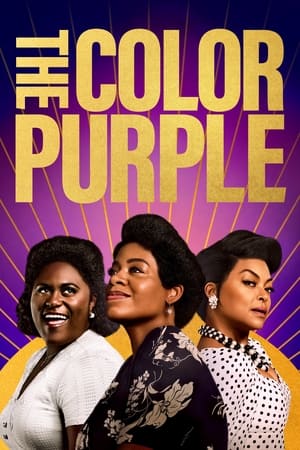Alice Walker’s timeless 1982 novel, “The Color Purple,” continues to captivate audiences through various adaptations, from Steven Spielberg’s acclaimed film to the 2005 Broadway musical. Blitz Bazawule’s latest cinematic endeavor seamlessly blends the profound reflections of the written word with the dynamic energy of musical performance.
“The Color Purple” unfolds the poignant narrative of Celie, portrayed in her youth by the talented Phylicia Pearl Mpasi and in adulthood by the mesmerizing Fantasia Barrino. The film explores Celie’s journey from carefree days with her sister Nettie (played by Halle Bailey) to a life overshadowed by an oppressive father, culminating in her forced marriage to Mister (Colman Domingo) after enduring the loss of her children.
As Nettie disappears from Celie’s life, she navigates the ensuing decades alone, finding solace in the distant hope of reuniting with her sister and children. The film beautifully captures Celie’s emotional odyssey, highlighting her relationships with Shug Avery (Taraji P. Henson), a blues singer, and Sofia (Danielle Brooks), her spirited daughter-in-law.
The performances in “The Color Purple” stand as the film’s pillars of success. Mpasi and Barrino, in their film debuts, deliver exceptional portrayals of Celie, showcasing her introspection, hesitancy, and resilient spirit. Mpasi, in particular, is magnetic, conveying a range of emotions with a hypnotic smile and powerful expressions. The chemistry between Mpasi and Bailey authentically portrays the sisters’ bond, making Nettie’s absence palpable.
Barrino, as the elder Celie, skillfully balances childhood naivety with the weight of a woman constrained by oppressive men. Brooks, Tony-nominated for her stage performance, steals the show with a compelling portrayal of Sofia, refusing to be ignored or disrespected.
However, Henson’s portrayal of Shug falters, standing out as an outlier amidst authentic performances. While providing moments of levity, Henson’s overacting feels disconnected from the film’s overall sincerity. Shug’s character, a diva with layers of insecurity and pride, requires a charisma that Henson fails to fully embody.
In exploring Celie’s life, the film occasionally veers towards less compelling storylines, particularly in its focus on Shug. Some musical numbers feel expendable, disrupting the film’s pacing. Yet, the triumphant musical moments, such as “Hell No” and “I’m Here,” resonate emotionally, complemented by the film’s warm and vibrant portrayal of the American South.
“The Color Purple” emerges as a powerful emotional portrait of a Black woman’s life, navigating adversities with resilience. The film’s true impact lies in celebrating Black sisterhood, a testament to perseverance and a decades-long coming-of-age story that faithfully revitalizes a beloved narrative.


